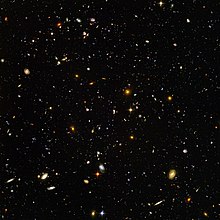Weston La Barre
anthropologist (1911–1996)
Raoul Weston La Barre (13 December 1911 – March 1996) was an American anthropologist, best known for his work in ethnobotany, particularly with regard to Native-American religion, and for his application of psychiatric and psychoanalytic theories to ethnography.


Quotes
editHallucinogens and the Shamanic Origins of Religion (1972)
edit- As published in Flesh of the Gods (1972), pp. 261-278
- We have too long supposed that the Unknown mysterium tremendum et fascinosum of religion was outside us, when in fact that Unknown, although ego-alien or unconscious, was all the while within us: the alleged “supernatural” is the human “subconscious.”
- p. 261
- The subjective self emerges most purely in states of sensory deprivation, when the blank screen of consciousness has projected upon it only the individual hallucinatory subjective self, without sensory correction or editing, without reality testing or any such objective “noise.”
- p. 263
- A religion is a kind of group dream—the subjective poetry in which, supporting one another’s faith or need to believe, we strive desperately to believe.
- p. 264
- Like the paranoid schizophrenic, the vatic personality pretends to be talking about the grandiose outside cosmic world, but he is really talking grandiosely in symbolic ways only about his narcissistic self and his inner world. The mystic pretends to discard his sensory self in order to meld with the cosmic Self; but in discarding his senses he abjures his only connection with the cosmos and re-encounters only himself. The realities he expounds are inside him.
- p. 265
- “God” is often clinically paranoiac because the shaman’s “supernatural helper” is the projection of the shaman himself. The personality of Yahweh, so to speak, exactly fits the irascible personality of the sheikh-shaman Moses; the voices of Yahweh and Moses are indistinguishable. Of course, shamans do not always have an easy time of it. If the dereistic dreamer arouses too much anxiety, people call him crazy, just as people must put themselves at a psychological distance from the frightening and uncanny schizophrenic. But if the dreamer largely allays anxiety in the society, then he is the shaman-savior. Thus it is that outsiders to the society cannot tell the difference between a psychotic and a vatic personality. Only the society itself can distinguish between its psychotics and its shaman-saviors.
- p. 266